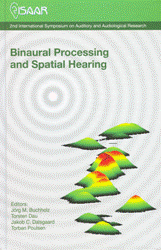Spatial hearing as a function of growth: how adults differ from children
Keywords:
Audiology, Hearing Research, Auditory ResearchAbstract
Spatial hearing, and how we hear noise and sound, is strongly dependent on our individual head-related transfer functions (HRTF). In order to obtain spatial noise measures arti cial heads are used. Spatial cues, such as the interaural time and level differences can be deduced from the HRTF. The first varies a lot depending on the head width and whether the effect of the second cue is more complex. Many investigations showed that there exist numerous individual differences between the HRTFs of adults caused by the differences in the head geometries. It becomes evident that children and adults differ tremendously as far as their respective head-related transfer functions are concerned. Differences in the anatomy of children and adults thus result in different binaural cues. The individual anthropometric parameters, however, affect the binaural cues to a varying extent. These new ndings open up new possibilities to develop arti cial child heads and couplers for hearing aids that are suitable for children.
References
Fels, J. (2008). From Children to Adults: How Binaural Cues and Ear Canal Impedances Grow PhD thesis (RWTH Aachen University, Logos Verlag Berlin, ISBN: 978-3-8325-1855-4).
Fels, J., Buthmann, P., and Vorländer, M. (2004). “Head-related transfer functions of children,” Acta Acustica united with Acustica 90, 918-927.
Lyamshev, L. M. (1959). “A question in connection with the principle of reciprocity in acoustics,” Soviet Physics Doklady 4, 406.
Møller, H., Sørensen, M. F., Hammershøi, D., and Jensen, C. B. (1995). “Head-related transfer functions of human subjects,” Journal of the Audio Engineering Society 43, 300-321.
Shaw, E. A. G. (1976). “Diffuse eld sensitivity of external ear based on reciprocity principle,” J. Acoust. Soc. Am. 60, S102–S102. http://link.aip.org/link/?JAS/60/ S102/1. Last viewed 13/04/10.
Additional Files
Published
How to Cite
Issue
Section
License
Authors who publish with this journal agree to the following terms:
a. Authors retain copyright* and grant the journal right of first publication with the work simultaneously licensed under a Creative Commons Attribution License that allows others to share the work with an acknowledgement of the work's authorship and initial publication in this journal.
b. Authors are able to enter into separate, additional contractual arrangements for the non-exclusive distribution of the journal's published version of the work (e.g., post it to an institutional repository or publish it in a book), with an acknowledgement of its initial publication in this journal.
c. Authors are permitted and encouraged to post their work online (e.g., in institutional repositories or on their website) prior to and during the submission process, as it can lead to productive exchanges, as well as earlier and greater citation of published work (See The Effect of Open Access).
*From the 2017 issue onward. The Danavox Jubilee Foundation owns the copyright of all articles published in the 1969-2015 issues. However, authors are still allowed to share the work with an acknowledgement of the work's authorship and initial publication in this journal.


